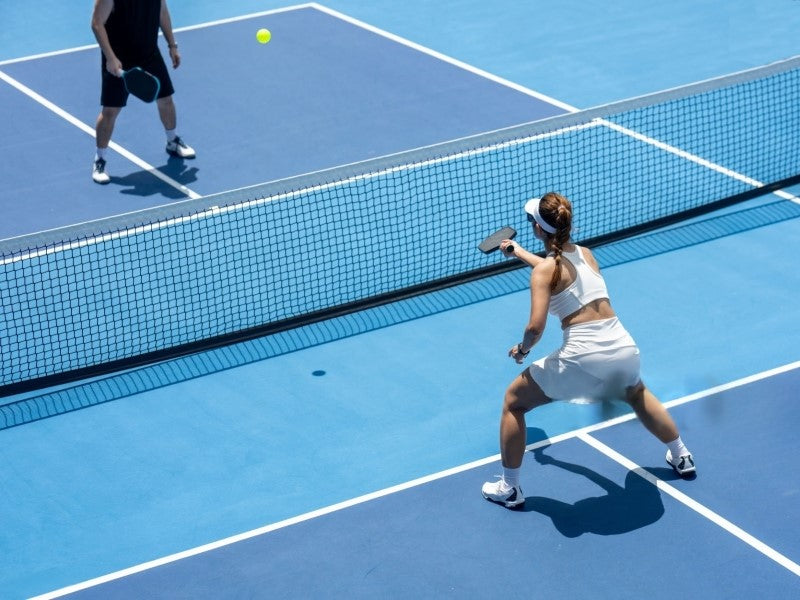As pickleball continues to grow in popularity, the conversation around how games are scored is evolving just as fast. While traditional side-out scoring has been the standard for decades, more players and organizers are starting to experiment with rally scoring to speed up gameplay and enhance the viewing experience. But is rally scoring in pickleball truly better for faster games, or does it sacrifice other elements of the sport? Let’s explore.
What Is Rally Scoring in Pickleball?
Rally scoring means that a point is awarded on every rally, regardless of which team served. This system contrasts with traditional scoring, where only the serving team can earn points.
Here’s a quick breakdown:
- Rally Scoring: Every rally results in a point, no matter who served.
- Traditional Scoring: Only the serving side can score; the receiving side can only win the right to serve.
In rally scoring, the pace of the game tends to accelerate because there's a point at stake in every exchange, making each serve and return more impactful.

How Rally Scoring Works in Pickleball
While not yet the standard in tournaments sanctioned by organizations like USA Pickleball, rally scoring is being tested in recreational leagues, clinics, and even some professional settings.
Here are the general rules of rally scoring in pickleball:
- A point is awarded on every rally, whether served by your team or your opponent’s.
- Games are typically played to 15 or 21 points, and you must win by 2.
- Server rotation still follows traditional rules: in doubles, teammates alternate serves until a side-out.
- The score is announced as two numbers (your score – opponent’s score), without the server number.
- Server positions alternate based on the even/odd rule, much like in singles traditional scoring.
How Traditional Scoring Slows the Game Down
In traditional pickleball scoring:
- Only the serving team can score points.
- A side-out occurs when both players on a team lose their serve.
- Rallies where the receiving team wins don’t count for score but can lead to possession changes.
Because points are not awarded on every rally, matches can last longer. It’s possible to have long sequences where the ball changes sides multiple times without either team earning points, especially if both teams are evenly matched.
Does Rally Scoring Really Make Games Faster?
Short Answer: Yes, It Usually Does
Several studies and informal match timings suggest that rally scoring can reduce match length by up to 25%–30% on average. That’s especially helpful in:
- Tournaments with multiple back-to-back games
- Clinics where instructors need to rotate groups quickly
- Televised matches, where time constraints matter
Because a point is scored on every rally, the overall pace is brisk, and the final score accumulates quickly. You spend less time rotating servers and more time playing high-stakes points.
Advantages of Rally Scoring in Pickleball
1. Faster Match Completion
Rally scoring shortens match time significantly, making it easier to schedule games in tight time blocks. This is especially useful for round-robin events or when managing multiple courts.
2. Easier for Beginners to Understand
New players often find rally scoring more intuitive because it aligns with scoring systems from other sports like volleyball or badminton. The "you win the rally, you get the point" model is easier to follow.
3. More Exciting for Spectators
Because every rally results in a point, the game feels more dynamic and engaging for those watching. There’s less “dead time” or anticlimactic side-outs.
4. Levels the Playing Field
In traditional scoring, experienced players can dominate by keeping serve for long stretches. Rally scoring offers more balance, as even a team on the defensive can score points, giving underdogs a better shot.
Drawbacks of Rally Scoring
1. Reduces the Impact of Serve Strategy
One of the strategic elements of pickleball is holding serve and applying pressure while you're the only side eligible to score. Rally scoring dilutes that advantage, which may frustrate skilled servers.
2. Less Emphasis on Momentum
In traditional scoring, maintaining serve gives players a sense of momentum and control. In rally scoring, momentum can shift more frequently, making games feel more erratic.
3. May Feel Less “Earned”
Some players argue that rally scoring “cheapens” the value of each point because points can be earned by simply returning the ball rather than having to fight to keep serve.
4. Inconsistent Adoption
Because rally scoring is still new to pickleball, players may experience confusion when switching between scoring systems in different leagues, clinics, or tournaments.
Is Rally Scoring the Future of Pickleball?

This is a hot topic in the pickleball community. While organizations like Major League Pickleball (MLP) have embraced rally scoring for its efficiency and spectator appeal, traditionalists prefer to maintain the classic format.
Some predict that rally scoring may become the norm for professional or broadcasted matches, while traditional scoring will remain in grassroots and recreational settings.
In 2025, hybrid systems are being tested, such as:
- Rally scoring to 15, with a freeze at 14 where only the server can score
- Best-of-three rally scoring games to 11 or 21
- Mixed formats where rally scoring is used in early rounds, and traditional scoring in finals
When Should You Use Rally Scoring?
You might consider using rally scoring if:
- You're hosting a tournament with time constraints
- You're teaching a pickleball class with beginners
- You’re playing casual games and want to fit more into a session
- You're part of a club that plays round-robin or ladder formats
However, if you're preparing for an official tournament or serious league, stick to traditional scoring unless told otherwise.
What Players and Coaches Are Saying
Many coaches find that rally scoring helps students focus, because every point counts. It also removes confusion about who should serve next.
On the other hand, some advanced players say it removes the strategy of “breaking serve” and may result in “cheap” wins. For them, the challenge of earning points only while serving is part of what makes pickleball unique.
Final Verdict: Is Rally Scoring Better for Faster Games?
If speed and simplicity are your goals, then yes—rally scoring is an excellent option. It makes matches more predictable in length, easier to manage, and more engaging for viewers and new players.
However, if you're a fan of traditional gameplay, value serve strategy, and prefer longer, momentum-based matches, rally scoring may feel like too much of a departure.
Ultimately, the best scoring system depends on your setting:
- For tournaments and TV: Rally scoring is a clear winner
- For serious competitive play: Traditional scoring retains its depth
- For recreational fun: Either system works, depending on group preference
Pickleball rally scoring is gaining traction, and for good reason. It offers faster games, easier tracking, and better experiences for both players and spectators. Whether it becomes the standard remains to be seen, but for now, it’s a powerful tool for adapting the game to modern needs.








Leave a comment
This site is protected by hCaptcha and the hCaptcha Privacy Policy and Terms of Service apply.